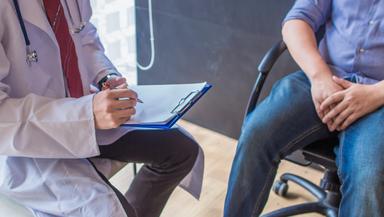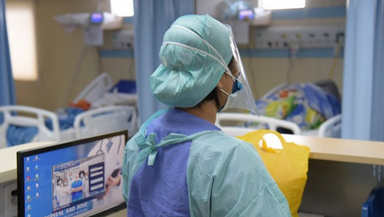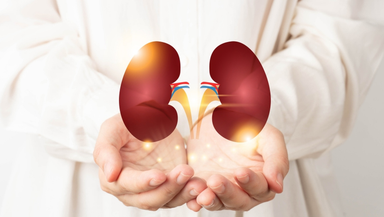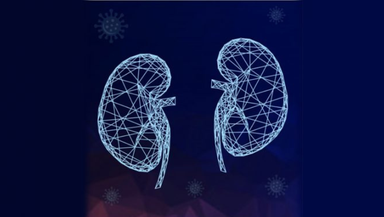Lower Back Pain and Fever

The lower back cannot be underestimated, even though it has become a common condition that can range from slight discomfort to severe symptoms and has affected people of all ages. Furthermore, It can be acute, or chronic based on a variety of factors, including muscle strain, poor posture, injury, structural abnormalities, or underlying medical disorders.
Most importantly, back discomfort can have a substantial influence on daily activities and quality of life. However, with the correct diagnosis and treatment. Back pain with fever can be properly managed and brought under control. The combination of these symptoms can indicate a variety of underlying medical disorders, ranging from minor to severe.
Moreover, you cannot turn a blind eye If you have persistent or severe lower back pain that is accompanied by a fever, you should seek medical attention. By assessing your symptoms, and running the required diagnostic tests, you can start considering suitable treatment options. Let's explore further information about the symptoms and causes of back pain and fever below.
What Is Lower Back Pain?
Before we head to understand the in-depth symptoms and causes of lower back pain. It is important that we understand what lower back pain is. It refers to discomfort or pain in the lumbar region, which is located below the ribcage and above the hips. Due to this, you can experience certain symptoms like difficulty urinating, back pain and fever, severe abdominal discomfort, weakness or numbness in the legs, and so on.
Severe back pain with a fever or high body temperature may indicate an infection or inflammation in the body. However, milder lower back pain might result from muscle strain, spinal issues, or other medical ailments. Generally, back discomfort can be alleviated with rest and specific medications. Moreover, back pain and fever can also be an indicator that there can be underlying neurological conditions. Therefore, It is crucial to consult with a neuro specialist or spinal specialist to get an accurate diagnosis and a treatment plan tailored to your specific condition. Take a look at the Symptoms of Lower Back Pain.
What are the Symptoms of Lower Back Pain?
Lower back pain can manifest in various ways, depending on its underlying cause. While headache, back pain and fever symptoms are common. The pain can range from a subtle ache to a sharp, stabbing sensation. It may originate in the lower back and radiate to the buttocks, hips, and legs. The intensity and location of the pain can vary depending on the source. Let's explore other signs and symptoms below.
Stiffness: Many individuals with lower back pain experience stiffness in the affected area. This stiffness can make it difficult to move or perform everyday activities like bending, lifting, or standing straight.
Muscle Spasms: Lower back pain can be accompanied by muscle spasms. These involuntary contractions of the muscles in the lower back can cause additional pain and discomfort.
Restricted Movements: Lower back pain can restrict the range of motion in the lumbar region. This may make it challenging to perform certain movements, such as twisting, bending, or turning.
Pins and Needles: If a nerve is compressed or irritated in the lower back, it can lead to numbness, tingling, or a "pins and needles" feeling in the buttocks, legs, or feet. This symptom is often associated with conditions like sciatica.
Weakness in the legs: In some cases, lower back pain may cause weakness in the legs. You may have difficulty walking, climbing stairs, or performing activities that require leg strength.
Causes Of Lower Back Pain?
There can be various causes that lead to back pain. Ranging from minor muscle strains to more serious underlying conditions. Understanding the potential causes can help identify the source of your pain and guide appropriate treatment. Here are some common causes of lower back pain.
Muscle or Ligament Strain: Straining the muscles or ligaments in the lower back is a common source of pain. This might happen as a result of rapid movements, incorrect lifting practises, or overexertion during physical activity.
Herniated Disc: When the soft inner substance of a spinal disc protrudes through its outer layer, it can irritate adjacent nerves and cause lower back pain. This is also referred to as a slipped or ruptured disc.
Degenerative Disc Disease: The natural ageing process can cause wear and tear on the spinal discs, leading to degenerative disc disease. This condition can cause chronic lower back pain due to the loss of disc height and cushioning ability.
Spinal Stenosis: The narrowing of the spinal canal, which can place pressure on the spinal cord and nerves, is referred to as spinal stenosis. It is frequently caused by age-related changes and can cause lower back discomfort and radiating leg pain.
Sciatica: Sciatica is a disorder caused by compression or irritation of the sciatic nerve, which runs from the lower back down the legs. Sharp, shooting pains in the lower back and down one leg.
Arthritis: Different kinds of arthritis, such as osteoarthritis and rheumatoid arthritis, can damage the joints in the lower back, causing chronic pain and stiffness.
Kidney Infections or Stones: Infections or the presence of kidney stones can cause lower back discomfort, which is frequently accompanied by fever, urinary symptoms, and, in rare cases, blood in the urine.
Other Causes
Spinal structural disorders, such as scoliosis (sideways curvature) or spondylolisthesis (vertebral slippage), can contribute to lower back pain. Certain inflammatory problems, such as ankylosing spondylitis or autoimmune disorders such as lupus, can cause chronic inflammation and lower back discomfort. Moreover, other causes of lower back pain include fibromyalgia, endometriosis, especially in women, spinal infections, spinal tumours, or traumatic injuries.
How Is Lower Back Pain Diagnosed?
When it comes to diagnosing fever lower back pain, healthcare professionals employ various methods to determine the underlying cause. The diagnostic process typically involves a comprehensive evaluation of your symptoms, medical history, and physical examination. Here are some common approaches and tests used in diagnosing lower back pain and fever:
- Medical History: Healthcare provider assesses symptoms, medical history, and underlying conditions to diagnose and treat lower back pain.
- Physical Examination: Physical examination assesses a range of motion, muscle strength, reflexes, nerve involvement, and tenderness, identifying abnormalities.
- Imaging Tests: Imaging tests reveal structural abnormalities in the lower back, including X-rays, MRI scans, and CT scans. X-rays reveal bone abnormalities, fractures, and degenerative changes, while MRI scans detect soft tissue problems and provide cross-sectional images of the spine.
- Blood Tests: Blood tests detect inflammation, infection, or arthritis in suspected systemic conditions.
- Electromyography (EMG) and Nerve Conduction Studies (NCS): Tests assess muscle activity and nerve signal conduction, identifying compression or damage.
- Diagnostic Injections: Diagnostic injections of local anaesthetics or steroids can temporarily relieve pain in lower back structures, until identifying pain sources.
What Are The Treatments For Lower Back Pain?
The underlying cause, the severity of symptoms like fever lower back pain, and individual circumstances all influence the treatment of lower back pain. Non-invasive methods can often alleviate pain fever with back pain and headache. It is crucial to consult a healthcare professional for an accurate diagnosis and to determine the most suitable treatment approach for your specific condition. They can assess your symptoms, conduct a thorough evaluation, and recommend the most effective treatment options for your lower back pain. Some common therapeutic options are listed below.
Pain Medications: Nonsteroidal anti-inflammatory medicines (NSAIDs) such as ibuprofen or naproxen, which are available over the counter, can help relieve pain and reduce inflammation. If NSAIDs do not relieve your back pain and fever symptoms, your doctor may prescribe stronger pain relievers.
Physical Therapy: A physical therapist can create a customised training programme to help you strengthen the muscles that support your lower back, increase flexibility, and encourage appropriate body mechanics. Other therapies, such as manual therapy or electrical stimulation, may be included.
Injection Therapies: Injections may be indicated in some circumstances to offer temporary pain relief or to minimise inflammation. Epidural steroid injections, facet joint injections, and nerve root blocks are a few examples. A professional is usually in charge of administering these treatments.
Lifestyle Modifications: Maintaining a healthy weight, getting regular exercise, and practising good posture can all help to prevent and manage lower back pain. It is also advised to stop smoking, which can limit blood flow and increase the risk of disc degeneration.
Complementary Therapies: Acupuncture, chiropractic manipulation, or massage therapy may provide relief for some patients. However, the evidence supporting their efficacy for lower back pain varies, and it is important to consult with a healthcare professional before pursuing these treatments.
Surgical Intervention: Surgery is usually recommended if conservative treatment has failed to provide relief or if there is an underlying condition that requires surgical repair. Herniated disc ectomy, spinal fusion, and decompression therapy are a few examples. Surgery is often reserved for extreme conditions or when the conventional therapy have failed.
Conclusion
Lower back pain and fever are both causes of concern because they may indicate an underlying health issue. While lower back pain is a common complaint for numerous reasons, fever is rarely associated with it. Most of all of these symptoms may point to an infection, an inflammatory illness, or other systemic disorders that require quick medical attention.
Therefore, it is important that an individual facing such problems should consult a doctor if you have chronic or severe lower back pain that is accompanied by a fever. When dealing with lower back pain and fever, keep in mind that self-diagnosis and self-medication are not recommended. Seeking help from a multi speciality hospital can be majorly helpful as you can get related specialists under one roof. So do take the crucial steps when your medical diagnosis and appropriate treatment are assigned.











